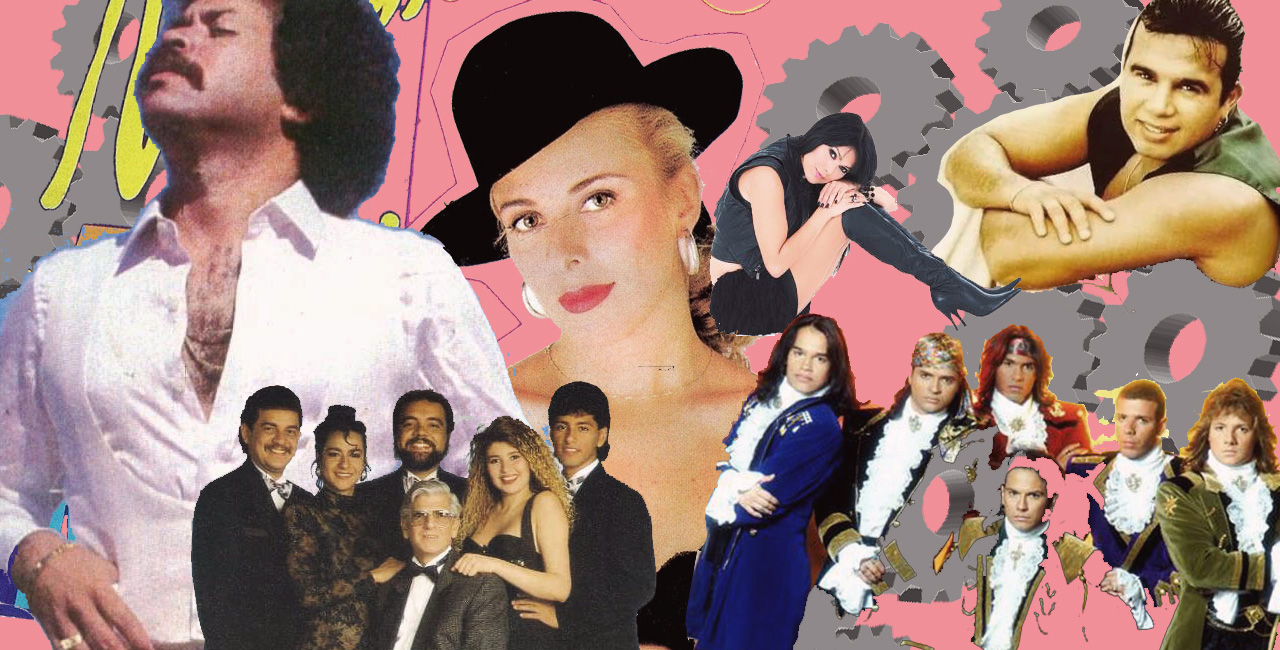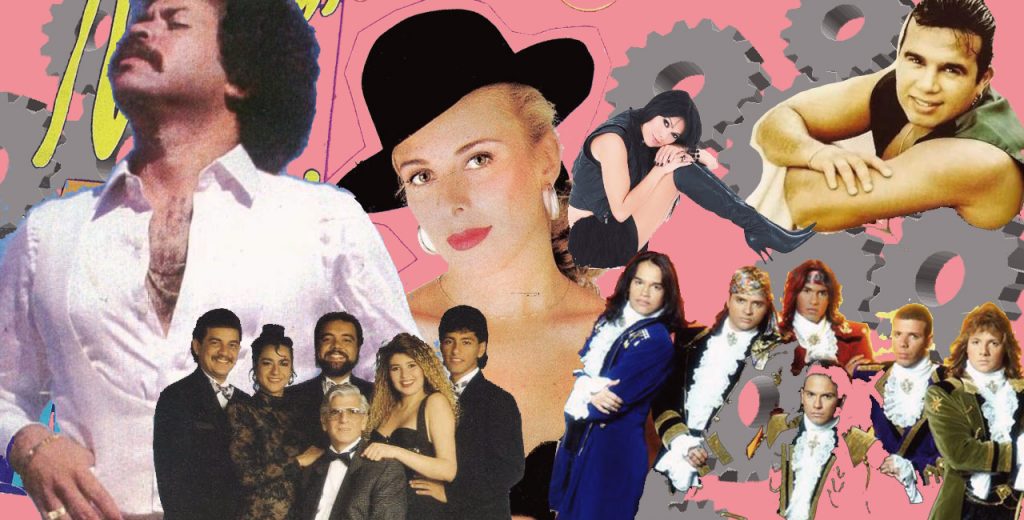In the second half of the 1980s, a mutant genre took Venezuela by storm. As a Caribbean country, merengue was everywhere, but in 1987, Rhapsodia, a pop rock sextet hailing from the small town of Bejuma, took a bold step and blended it with their popular synth-heavy sound, giving birth to “Nuestro amor.” Tecnomerengue was born, and with it came a new wave of artists who gave people both inside and outside of the Venezuelan borders fresh new dance hits in the years to come.
But “Nuestro amor” was just the seed; tecnomerengue blossomed by the turn of the decade, and ironically enough, the key figure behind its popularization wasn’t actually Venezuelan. Luis Alva Lescano was born in Peru, and it was there where he developed his craft as a musician, composer, and arranger. He was part of several renowned pop, rock, and go-go bands in his home country, like Los Zodiac, Los Madison’s, and Los Alfiles. He also served as head honcho of Sono Radio, once known as Peru’s most important record label, where he really grew as a producer.
He arrived in Venezuela in 1978, in search of greater opportunities, and quickly found his way into the local music business. While working with Los Melódicos, the country’s biggest tropical orchestra, he came to realize how to get young audiences into merengue. In the same fashion as Rhapsodia, he grabbed elements of techno pop, like synthesizers and drum machines, and mixed them with the Dominican-born genre, also throwing some Colombian cumbia and Brazilian lambada into the mix. Thanks to his vision, tecnomerengue became the new pop.
Alves was behind virtually every tecnomerengue hit from the late 80s and early 90s. He jumpstarted the careers of numerous artists, like Diveana, Roberto Antonio, Miguel Moly, Karolina (popularly known as Karolina con K), and literally created pop phenomena like Los Fantasmas del Caribe and Natusha. Latin America witnessed the success of Los Fantasmas’ “Muchacha triste” (Javiera Mena even references it in her song “Hasta la verdad”). Today, these songs appear at every family celebration in Venezuela, and that’s exactly where the genre will remain dear.
1
Diveana - "Noches de Media Luna"
During her time in Los Melódicos, Diveana sang lead vocals on some of the orchestra’s most popular singles, like “Tus ojos” and “Papachongo.” But the truth is, she never really felt like the face of the band, so when fairy godfather Luis Alves came knocking in 1991, she was ready for her close-up. She reached new heights with her 1993 album Noches de media luna, and the title track injected mystery and a little Spanish flair into tecnomerengue. Plus, she used to add some killer choreography when she performed it, as this old-school Sábado Sensacional footage shows.
2
Pecos Kanvas - "Mar y Luna"
Back in the 70s and 80s, Pecos Kanvas used to be the smooth crooner whose syrupy ballads made your mom and aunts weak in the knees. But when he resurfaced in 1991 with his album Mar y Luna, he traded his signature Afro for a Jheri curl hairstyle, and tapped Luis Alva to flip his sound to what the kids were listening to: tecnomerengue. The title track’s hook, played on those flute-like synths, is synapse-triggering, giving you an instant trip down memory lane. And even if you’re too young to remember it, you’ll be singing it in a matter of minutes. RIP Pecos.
3
Miguel Moly - "La Morena"
Caracas-born singer Miguel Moly truly brought out the techno elements of the genre. As one of Luis Alves’ protégées, and also a Los Melódicos alum, Moly’s most popular tracks were probably his odes to curvy women, which include “La Piernona,” “La Catira,” and, of course, “La Morena,” all of which are stamped with his signature catchphrase “Mamita!” In the song, his affair with la morena doesn’t end well, but that doesn’t stop him from thinking que ‘ta buena. Get ready for some sped-up, acid-like synth lines, drum machine tom fills, and the occasional flanger.
4
Roberto Antonio - "Noches de fantasía"
The third former Los Melódicos member on this list, Roberto Antonio might be the artist responsible for the internationalization of tecnomerengue. Luis Alva – who else? – penned almost all the songs included on his 1990 album Marejada, including his hit single “Noches de fantasía.” This is the one song you hear every birthday, especially when one of your aunts unwillingly pulls you onto the dance floor, and there’s nothing left to do but dance your embarrassment away. Like an acquired superpower, you just know exactly when to shout those “ayayayyyyy”’s.
5
Natusha - "Tú la tienes que pagar"
This is the kind of song that Luis Alves himself would classify as “tecno-tropical,” with clear influences from lambada and cumbia. Natusha is probably better known for “Rumba Lambada,” but we wanted to highlight “Tú la tienes que pagar” because of its empowering lyrics, where she reads her former flame and even drops a controversial and often misinterpreted sarcastic line: “Ay sí, me voy a suicidar.” But the empowerment motif becomes a little shaky when you learn that Alves actually created the whole musical concept and songs beforehand, and just signed the French-Venezuelan singer, born Nathalie Diaz Rodríguez, to be the voice and public image. Hell, he even invented the name.
6
BONUS: Los Fantasmas del Caribe - "Muchacha triste"
Los Fantasmas del Caribe is proof of Luis Alves’ powers as a producer and impresario. The band is totally a product of his creative vision, as he carefully conceptualized the music, outfits, and choreography behind the project. This was tecnomerengue and tecno-tropical’s biggest success – and also the one that burnt out the fastest. While it might seem ridiculous for pirates to play keytars today, back in 1989, people were down for it, from the U.S. to Argentina, Spain, and everywhere in between.




